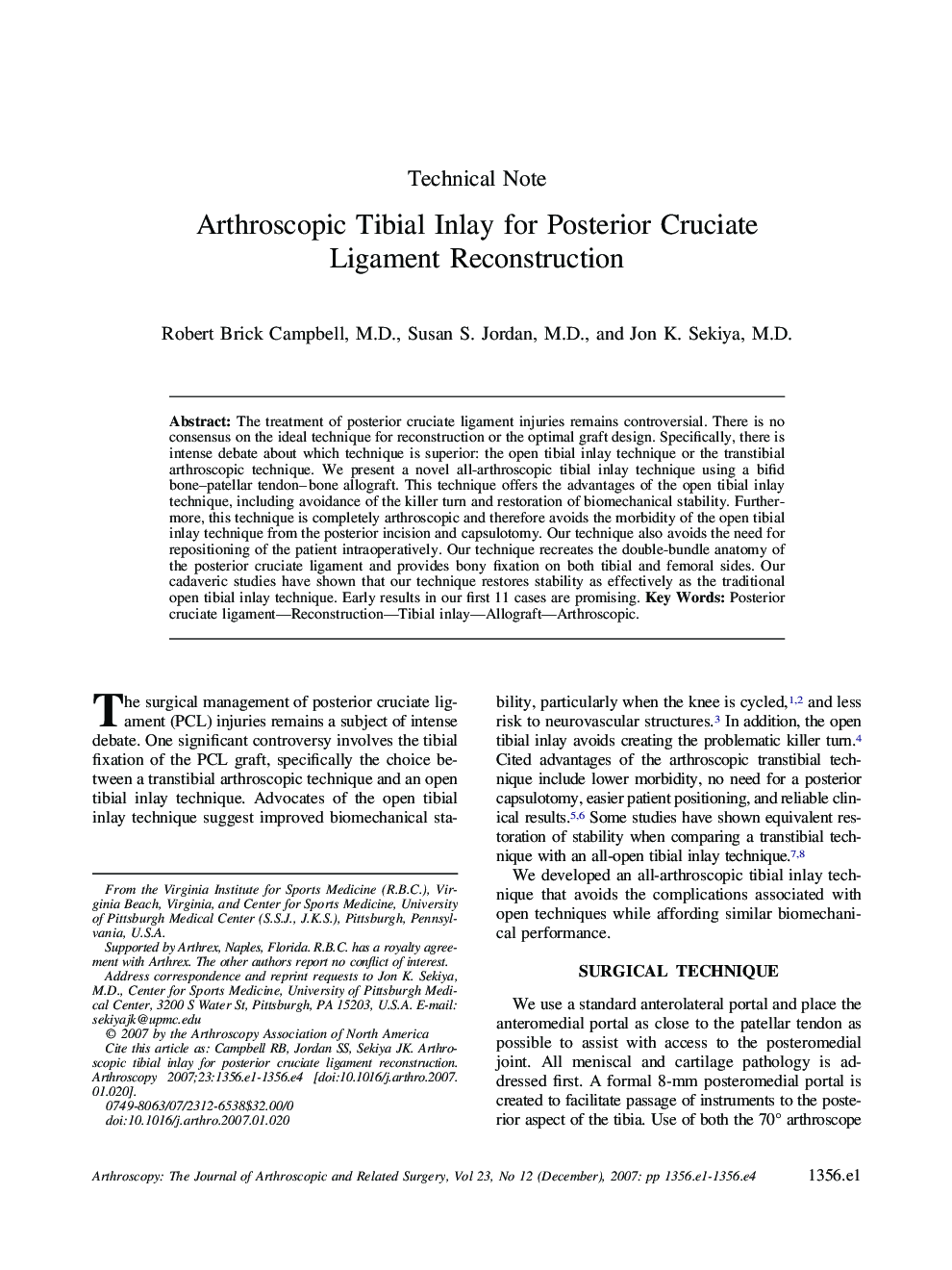| Article ID | Journal | Published Year | Pages | File Type |
|---|---|---|---|---|
| 4045313 | Arthroscopy: The Journal of Arthroscopic & Related Surgery | 2007 | 4 Pages |
Abstract
The treatment of posterior cruciate ligament injuries remains controversial. There is no consensus on the ideal technique for reconstruction or the optimal graft design. Specifically, there is intense debate about which technique is superior: the open tibial inlay technique or the transtibial arthroscopic technique. We present a novel all-arthroscopic tibial inlay technique using a bifid bone-patellar tendon-bone allograft. This technique offers the advantages of the open tibial inlay technique, including avoidance of the killer turn and restoration of biomechanical stability. Furthermore, this technique is completely arthroscopic and therefore avoids the morbidity of the open tibial inlay technique from the posterior incision and capsulotomy. Our technique also avoids the need for repositioning of the patient intraoperatively. Our technique recreates the double-bundle anatomy of the posterior cruciate ligament and provides bony fixation on both tibial and femoral sides. Our cadaveric studies have shown that our technique restores stability as effectively as the traditional open tibial inlay technique. Early results in our first 11 cases are promising.
Related Topics
Health Sciences
Medicine and Dentistry
Orthopedics, Sports Medicine and Rehabilitation
Authors
Robert Brick M.D., Susan S. M.D., Jon K. M.D.,
